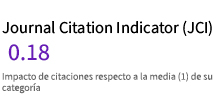Photograms and screens. Images through the lens of words and words through the lens of images
DOI:
https://doi.org/10.24310/Fotocinema.2019.v0i18.5531Keywords:
Photogram, Display, Imprint, Self-referenceAbstract
In response to the de-materialisation of photography and to the creation of images via algorithms not necessarily printed to be seen, last years have witnessed the emergence of a number of critical artworks seeking to recover a material nature and invoking the physical appearance of objects. This article aims to address some artworks in this line which are self-referenced as they allude either to their own origin, functioning and cultural meaning, either to their similarities to or differences with verbal communication. This article focuses on items made using the photogram technique as well as on some pieces made for on-screen display through which the intangible image becomes visible. Whether the etymological origin of the word “photography” could be recalled in artworks subverting the hybridization brought by the digital era, it would be to think about the written word that appears through the lens of photography. This will guide the comparative analysis between text and image, their correlation, the impossible translation of one into another and tensions between semantical contents and words materialised as images.
Downloads
Metrics
Publication Facts
Reviewer profiles N/A
Author statements
Indexed in
-
—
- Academic society
- N/A
- Publisher
- Universidad de Málaga
References
Batchen, G. (2000), “Ectoplasm. Photography in the Digital Age”, in Squiers, C. (ed.). Overexposed. Essays on Contemporary Photography (pp.9-23). New York: The New York Press.
Buck Morss, S. (2005), “Estudios visuales e imaginación global”, en Brea, J.L. (ed.). Estudios visuales. La epistemología de la visualidad en la era de la globalización (pp.145-159). Madrid: Akal.
Didi Huberman, G. (2008). La ressemblance par contact. Archéologie, anachronisme et modernité de l’empreinte. Paris: Minuit.
Dubois, Ph. (2016). De l’image-trace à l’image-fiction. Le mouvement des théories de la photographie de 1980 à nos jours, Études photographiques, 34. https://journals.openedition.org/etudesphotographiques/3593
Flusser, V. (2014). Para una filosofía de la fotografía. Buenos Aires: La marca.
Fontcuberta, J. (2010). La cámara de Pandora. La fotografí@ después de la fotografía. Barcelona: Gustavo Gili.
Gunthert, A. (2016). Une illusion essentielle. La photographie saisie par la théorie, Études photographiques, 34. https://journals.openedition.org/etudesphotographiques/3592
Krauss, R. (1977). Notes on the index. Seventies Art in America, October 3, 68-81.
Krauss, R. (1999). Reinventing the medium, Critical Inquiry, 25, 289-305.
Mitchell, W.J.T. (1992). The Reconfigured Eye: Visual Truth in the Post-Photographic Era. Cambridge: MIT Press.
Mitchell, W.J.T. (2009). Teoría de la imagen. Ensayos sobre representación verbal y visual. Madrid: Akal.
Schaeffer, J-M. (1987). L’image précaire. Du dispositif photographique. Paris: Du Seuil.
Schneller, K. (2007). Sur les traces de Rosalind Krauss. La réception française de la notion d’index, Études photographiques, 21, pp. 123-143. https://journals.openedition.org/etudesphotographiques/2483
Sekula, A. (1986). The Body and the Archive, October 39, 3-64.
Downloads
Published
How to Cite
Issue
Section
License
All contents published in Fotocinema Revista científica de cine y fotografía are protected under the Creative Commons Attribution-NonCommercial-ShareAlike 4.0 International (CC BY-NC-SA 4.0) license. All about this license is available in the following link: <http://creativecommons.org/licenses/by-nc-sa/4.0>
Users can copy, use, redistribute, share and exhibit publicly as long as:
- The original source and authorship of the material are cited (Journal, Publisher and URL of the work).
- It is not used for comercial purposes.
- The existence of the license and its especifications are mentioned.
There are two sets of authors’ rights: moral and property rights. Moral rights are perpetual prerogatives, unrenounceable, not-transferable, unalienable, imprescriptible and inembargable. According to authors’ rights legislation, Fotocinema. Revista científica de cine y fotografía recognizes and respects authors moral rights, as well as the ownership of property rights, which will be transferred to University of Malaga in open access. The property rights are referred to the benefits that are gained by the use or the dissemination of works. Fotocinema. Revista científica de cine y fotografía is published in an open access form and it is exclusively licenced by any means for doing or authorising distribution, dissemination, reproduction, , adaptation, translation or arrangement of works.
Authors are responsable for obtaining the necessary permission to use copyrighted images.














13.png)



